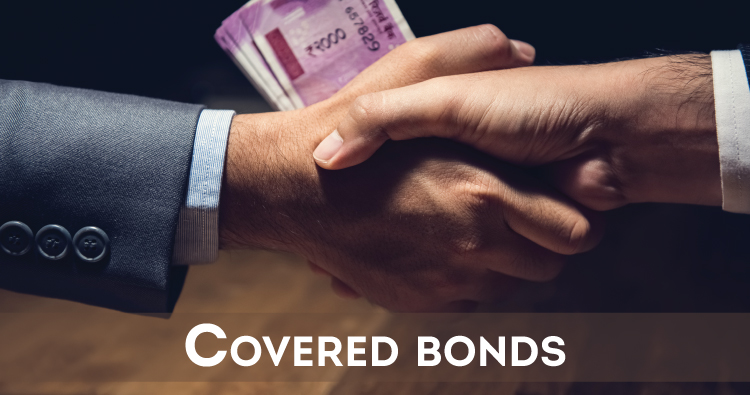

Should You Invest in Covered Bonds?
Everyone seems to be talking about covered bonds. The increase in the demand for these instruments is clear. As per the ICRA’s report, Indian issuers have sold covered bonds worth Rs. 2,218 crores in FY2021,up from Rs. 25 crores in FY2019.
In this article, we will talk about covered bonds and the hype surrounding this investment option.
What are Covered Bonds?
The NBFC creates a pool of loans against which the firm issues bonds. These bonds are called covered bonds. The asset, i.e., the pool of loans,are secured loans. This means that gold or any physical property backs the loan. E.g. a covered bond asset can comprise a pool of gold loans backed by physical gold. This is the reason behind its name.
Another safety feature of the bond is that covered bondholders are the first nominees if the NBFC goes bankrupt. This feature distinguishes covered bonds from other types of bonds.
How it benefits NBFCs?
Many NBFCs find it hard or expensive to raise money from the market. The debt instruments issued by these NBFC are not AAA-rated. AAA is the highest credit rating and depicts the high creditworthiness of the NBFC. So, in this current scenario, not many investors would be willing to take the risk and invest in the company.
So, NBFC can now raise funds at a cheaper rate through covered bonds. This may increase the company’s credit rating, making it easier for them to raise funds in the future.
How do investors benefit?
The demand for covered bonds is strong among investors seeking interest income and capital safety. In this low interest scenario, many investors are looking for fixed income assets that give them a reasonable rate of return.
Covered bonds are claimed to be less risky than equity assets and generate high returns than bank fixed deposits.
In India, covered bonds were an investment option for High Net worth Individuals(HNI). The minimum investment amount was Rs. 10 lakhs or more. But investors can make a minimum initial investment of Rs. 10,000 and invest in covered bonds.
Taxation
It is also a tax-efficient product,and you need to pay 10% tax if you stay invested for over 12 months.
Things to keep in mind before investing in covered bonds
Covered bonds have caught investors’ interest. Investors need to remember that high interest comes with credit risk, liquidity risks and fraud risks.
It would be a better idea to talk to your financial advisor before investing in covered bonds.
This blog is purely for educational purposes and not to be treated as personal advice. Mutual fund investments are subject to market risks, read all scheme-related documents carefully.
B 305 HulasBasti Gardens CHSL
Mahavirnagar, Kandivali West,
Mumbai, Maharashtra, India - 400067
Copyright © Anjgel Wealth. All rights reserved.